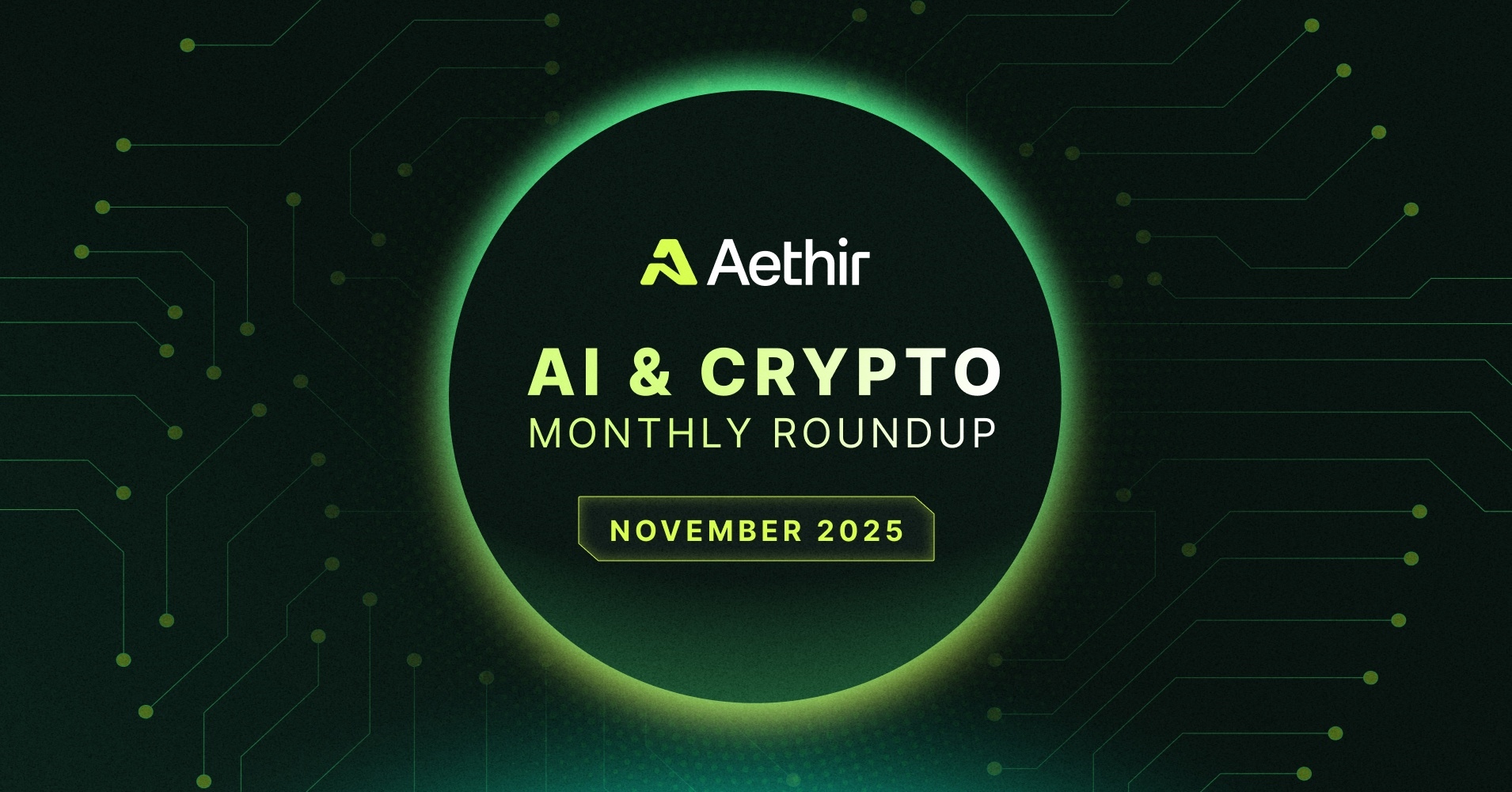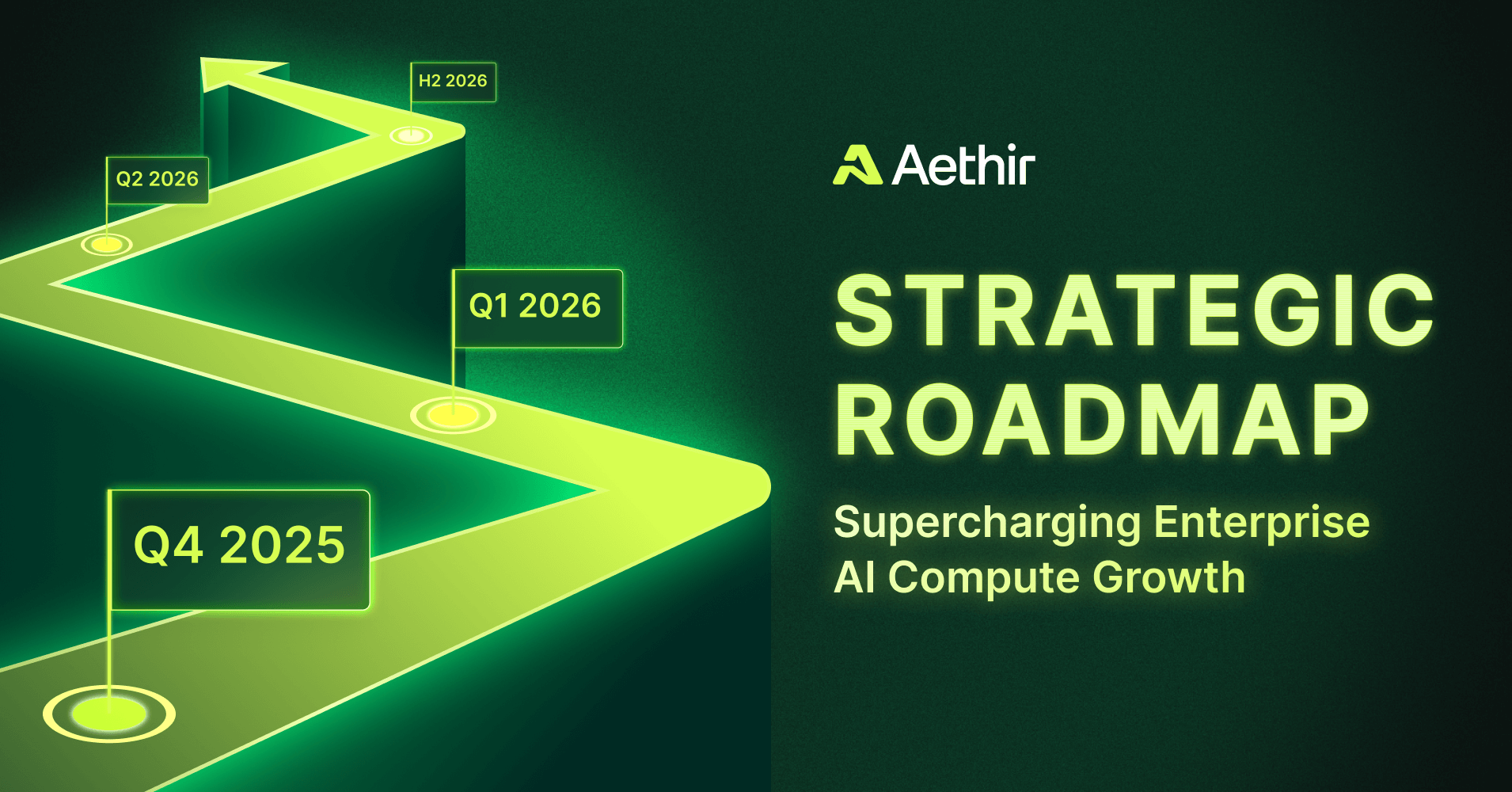Uncover the transformative impact of DePIN on AI's speed, efficiency, and collaborative potential
Decentralized Physical Infrastructure Networks (DePINs) use decentralized technologies like Blockchain and tokens to incentivize communities to build physical infrastructural networks. DePINs have multiple applications, from energy, computing, wireless, and AI to sensors.
Industries like artificial intelligence have been increasing the demand for computational power. However, traditional companies have struggled to keep up, resulting in longer wait times, high prices, low-quality chips, and greater latency.
DePINs are positioning themselves as a catalyst for overcoming these limitations by enabling distributed networks of computing resources. DePINs like Aethir allow users with unutilized computing power to rent it out, and each part of the DePIN network is owned and controlled by the respective owner. This approach reduces the control of big tech companies over computing resources.
Unleashing Unprecedented Computational Power for AI
Decentralized physical infrastructure networks (DePINs) form distributed networks of aggregated small-scale infrastructure. Such networks provide on-demand computing, allowing AI companies to move away from big techs. Such an approach provides an affordable model and allows AI startups and companies to become more innovative.
AI has been one of the fastest growing sectors as markets are expected to hit 184 billion U.S. dollars by the end of 2024, a nearly 50 billion increase compared to 2023. The same market is projected to be worth 826 billion U.S. dollars by 2030. On top of ongoing research and development, scalable computing resources are needed if the 2030 projections are to be met.
DePINs like Aethir are designed to scale with the growing demand for rapid AI growth. Aethir’s distributed model streamlines network expansion to deliver affordable and optimal computing resources as they are needed. This DePIN offers a perfect solution for real-time rendering, which can’t be done at scale using the available technologies like cloud compute infrastructures.
TensorOpera is already using Aethir’s decentralized GPU cloud infrastructure to train its TensorOpera Fox-1. This collaboration is a pioneering effort in distributing AI technology as this is the first mass-scale LLM training use case on a decentralized cloud network.
TensorOpera Fox-1 is trained on three trillion tokens using a nover 3-stage curriculum and based on 1.6 billion parameters, features that make it 78% deeper than similar models like Gemma 2B. To function optimally, TensorOpera Fox-1 needs GPU clusters with substantial memory capacity, efficient parallel processing capabilities and support high throughput. Aethir's decentralized cloud infrastructure with more than 40,000 top-grade GPUs and over 3000 NVIDIA H100s provides the required resources to power LLMs like TensorOpera Fox-1.
Accelerating AI Innovation and Time-to-Market
The major limitations to fast training of AI models are the availability of quality chips and latency. The distributed nature of DePINs makes it easy to keep up with the demands of AI and real-time rendering. This results in faster training times, streamlined experimentation, and rapid iteration of AI models.
DePINs have proven to expedite AI development cycles, from research to deployment. For instance, Aethir aggregates high-quality GPU resources like NVIDIA's H100 chips from top gaming studios, crypto companies, tech companies, and data centers. The high computing quality and access allow researchers and developers to work on AI projects quickly.
DePINs like Aethir aggregate chips from across the world, making it easy to meet geographic- and industry-specific requirements. Companies like TensorFlow are already enjoying the impact of Aethir’s distributed infrastructure as it was able to train and deploy a 750-million-meter AI model within 30 days.
Cost-wise, DePINs like Aethir can reduce the training fees by as much as 80% compared to legacy providers. This is achievable as DePINs don’t carry the same overhead as large corporates, nor do they have to create and maintain data centers from the ground up.
Fostering a Global Network of AI Collaboration
DePINs like Aethir are democratizing access to computing resources, fostering collaboration among AI researchers and developers worldwide. Traditionally, we had a wealth gap where high-end computing resources were owned by big techies, research firms and governments. DePINs are closing this wealth gap by aggregating small-scale infrastructure where individuals and organizations contribute resources to a distributed network.
Aethir is creating a thriving environment for knowledge sharing, cross-pollination of ideas, and collective problem-solving by creating a platform that connects AI developers and researchers across geographical boundaries. AI projects, once isolated to big techies due to resource limitations, can now flourish in a collaborative environment and encourage collective problem-solving.
Aethir is already the pioneer in the race to create a decentralized and interconnected AI ecosystem. The platform already has different services, from bare metals for those who want to take full control of creating AI models and platform-as-a-service for those looking for comprehensive tools for creating GPU-accelerated applications to Infrastructure as a Service (IaaS) with virtualized GPU instances.
Powering the Next Generation of AI Applications
Aethir DePIN technology is purpose-built to handle the complex workloads of edge computing and AI. Users can use chips nearest to them, offering low latency and delivering real-time insights. Aethir's decentralized, low-latency infrastructure is built for security and resilience, making it hard to hack or even have a single source of failure. It also supports real-time rendering at scale.
Aethir’s DePIN is suitable for power-edge computing applications requiring low-latency AI inference. With this infrastructure, AI models process data and generate insights at the network’s edge, closer to the data generation source. The process results in near-instantaneous responses, reducing the time data travels to a centralized server and back. Low latency is handy for applications like real-time decision-making systems and autonomous vehicles where even milliseconds matter.
Empowering AI at the Edge: The Role of Aethir Edge
Beyond its robust cloud infrastructure, Aethir is pushing the boundaries of AI capabilities further with Aethir Edge. This high-performance edge computing device allows users to directly contribute their unused computing power to the Aethir network. By leveraging Aethir Edge, individuals can actively participate in the DePIN ecosystem, earning rewards in ATH tokens while simultaneously bolstering the network's capacity to support even more demanding AI applications. This creates a virtuous cycle where technological advancement and individual empowerment fuel each other's growth.
The Future of DePINs: Democratized Access
DePINs are revolutionizing AI development by providing increased computational power, faster innovation, global collaboration, and advanced applications. The AI industry is growing exponentially, and players like DePINs must come into play for us to achieve these projections. DePINs have the potential to accelerate AI's progress and shape a future where AI benefits everyone by bridging the gap between the "GPU Rich" and the "GPU Poor."
Join the Aethir community and be a part of the AI revolution! Visit our website or follow us on social media to learn more.






